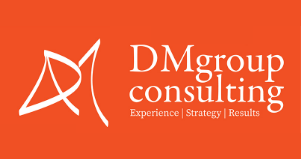Strategic planning sets the long-term direction for your organization. It helps align resources, prioritize activities, and ensures everyone works toward common goals. A strategic plan acts like a roadmap, guiding decisions and actions that lead to success.
Before diving into planning, it’s essential to understand the current situation. This involves assessing what your organization needs to grow and identifying strengths, weaknesses, opportunities, and threats. A clear grasp of these factors helps in crafting goals that are realistic and achievable.
Engaging stakeholders in the planning process is equally crucial. Including diverse voices ensures that the plan reflects shared interests and garners broader support. Building consensus among stakeholders fosters a sense of ownership, making it easier to implement the plan and achieve the desired outcomes.
Understanding the Importance of Strategic Planning
Strategic planning acts like a roadmap for your organization. It outlines your direction, helps make informed decisions, and guides you in achieving long-term goals. By having a clear strategy, your team knows where they are headed and how to get there. This clarity increases efficiency and focus, allowing your organization to use resources wisely.
A good strategic plan identifies both opportunities and challenges your organization might face. It also sets priorities. This focus ensures everyone is aligned and working towards the same objectives. Strategic planning helps in adapting to changes, as it prepares your organization for different scenarios. Being proactive about potential challenges means you’re ready to tackle them head-on.
Additionally, strategic planning strengthens your organization’s impact. By having a clear plan, you can measure progress and success more accurately. Tracking progress allows you to adjust the plan as needed, ensuring you stay on track. This adaptability makes your organization more resilient and able to thrive, even when unexpected events occur.
Conducting a Needs Assessment and SWOT Analysis
Conducting a needs assessment and a SWOT analysis is crucial for understanding your organization’s current position. These tools help you identify what your organization needs to succeed and what internal and external factors might affect your efforts.
Start with a needs assessment. This involves gathering data on what your organization needs to achieve its mission. Consider areas such as funding, staffing, and resources. Reach out to stakeholders, like staff and volunteers, to gather their insights. Gathering diverse perspectives provides a well-rounded understanding of your organization’s needs.
Next, perform a SWOT analysis. This tool helps identify strengths, weaknesses, opportunities, and threats. It involves listing:
1. Strengths: What does your organization do well? Consider resources, skills, or services that set you apart.
2. Weaknesses: Identify areas needing improvement. This could be outdated technology, limited skills, or inefficient processes.
3. Opportunities: What external factors can your organization leverage? This might include trends, partnerships, or funding possibilities.
4. Threats: Recognize challenges that might hinder progress. These could be economic shifts, new regulations, or increased competition.
By understanding these elements, your organization can create targeted strategies that address weaknesses and threats while leveraging strengths and opportunities. This comprehensive understanding sets a solid foundation for effective strategic planning.
Developing Clear Goals and Action Steps
Having clear goals and action steps is critical in moving your strategic plan from concept to reality. Start by defining what your organization hopes to achieve. These goals should align with your mission and address the needs identified in your assessment and SWOT analysis.
Use the SMART criteria to ensure your goals are Specific, Measurable, Achievable, Relevant, and Time-bound. For example, instead of a vague goal like “increase donations,” set a specific goal to “increase donations by 20% over the next year.” This clarity helps focus your team’s efforts and makes it easy to track progress.
Once you have clear goals, outline the action steps needed to achieve them. Break down each goal into smaller, manageable tasks. Assign these tasks to team members with clear deadlines and responsibilities. This division of tasks keeps everyone accountable and ensures steady progress.
Create a timeline to map out these action steps. A visual overview of deadlines and priorities helps you stay organized and adjust plans as needed. With well-defined goals and action steps, your organization has a clear path to follow, making it easier to achieve strategic success.
Engaging Stakeholders and Building Consensus
Engaging stakeholders and building consensus ensures your strategic plan receives the support it needs. Stakeholders can include staff, board members, volunteers, donors, and community partners. Their involvement not only fosters a sense of ownership but also brings diverse perspectives that enhance your plan’s effectiveness.
Start by communicating the plan clearly to all stakeholders. Share your vision and explain how the strategic plan benefits the organization. Be open to feedback and encourage questions. This transparency builds trust and increases buy-in from everyone involved.
Host workshops or meetings where stakeholders can discuss the plan, offer input, and get involved in decision-making. Interactive sessions allow participants to better understand their roles in the plan’s success and feel more committed to its implementation.
Regular updates on progress also keep stakeholders engaged. Share successes, challenges, and any necessary adjustments to the plan. This ongoing communication ensures that everyone remains aligned and motivated to achieve the collective goals.
Conclusion
Strategic planning is a crucial part of ensuring your organization’s success. By understanding its importance, conducting thorough assessments, setting clear goals, and engaging stakeholders, you create a plan that serves as a strong guide. These efforts lead to a proactive and organized approach, where everyone works together towards common objectives.
The process involves thoughtful analysis and collaboration, resulting in strategic decisions that empower your organization to tackle challenges head-on. This approach fosters an environment where all voices are heard, ensuring that the strategic plan truly reflects your organization’s needs and ambitions.
If you’re ready to take your strategic planning to the next level, contact DM Group Consulting. Our center for nonprofit management in Dallas is here to help you develop a tailored strategy that meets your goals and supports your mission. Let’s work together to create a successful future for your organization!




